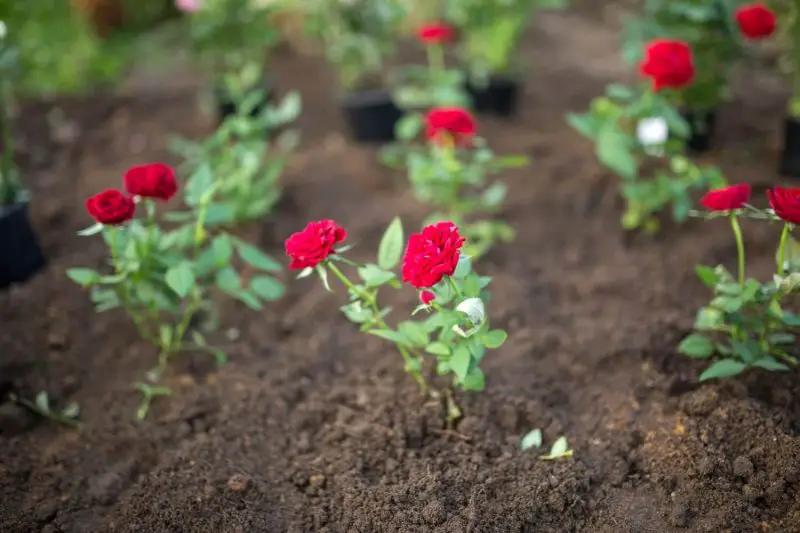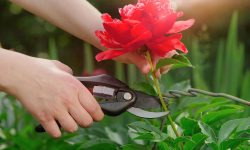Growing roses from seed may sound like a slow and uncertain journey, but it can be incredibly rewarding when done with care and patience. Many gardeners are fascinated by the idea of starting these elegant flowers from scratch, nurturing them through each stage until they bloom. If you want to learn how to grow roses from seed successfully, understanding the right techniques and environment is essential.
Unlike propagating roses from cuttings or buying established plants, growing them from seed requires extra attention to timing, stratification, and soil preparation. However, the process offers unique advantages, such as the ability to breed new varieties and produce robust plants adapted to your garden. For those who love challenges in gardening, knowing how to grow roses from seed successfully can open the door to a fulfilling hobby.
Whether you’re an experienced horticulturist or a passionate beginner, this guide will walk you through each stage in detail. By following the steps carefully, you’ll gain confidence and increase your chances of success. Let’s explore exactly how to grow roses from seed successfully, from seed collection to seeing your first blossoms.
Understanding Rose Seeds

Where Rose Seeds Come From
Roses produce seeds inside rose hips, which develop after the blooms fade. These hips contain multiple seeds that are encased in a protective shell. Once matured, they can be harvested and prepared for growing. Rose seeds, or achenes, are typically small, hard, and need specific conditions to germinate.
The seeds within the rose hip are the result of pollination, and they carry a unique genetic combination. This means that even if you plant seeds from a famous hybrid rose, the resulting plants may look different. That unpredictability adds a layer of intrigue to the process.
Knowing the source of your rose seeds is important. You can collect them from existing rose bushes or purchase them from reputable suppliers. If you’re collecting them yourself, make sure the hips are fully ripe and collected at the right time in the season.
Characteristics of Rose Seeds
Rose seeds have a thick outer coat that protects them from environmental stress, but it also makes germination more difficult. This outer layer must be broken down naturally or through a process called stratification. Without it, the seeds will likely remain dormant even in ideal conditions.
The viability of rose seeds depends on several factors, including how they were stored, how old they are, and whether they were fully mature at harvest. Fresh seeds that have been properly cleaned and stratified offer the best germination rates.
Understanding the biological nature of rose seeds helps in planning each step of the growing process. If you skip critical steps like scarification or stratification, the seeds may not sprout at all.
Preparing Rose Seeds for Germination
Cleaning and Drying the Seeds
Once the rose hips are harvested, they must be opened to access the seeds inside. Use a clean knife or blade to slice open the hips and remove the seeds. It’s essential to clean off any pulp or residue, as it can cause mold or bacteria growth during the next stages.
After separating the seeds, rinse them thoroughly in clean water. Soaking the seeds in a diluted hydrogen peroxide solution for about 24 hours can also help kill any lingering pathogens. Once cleaned, let them dry briefly on a paper towel.
Clean, sanitized seeds have a much higher chance of surviving the stratification process and sprouting successfully. Taking time to clean them properly at this stage prevents potential failure later on.
Cold Stratification Process
Stratification is a cold treatment that mimics winter conditions and triggers the seeds to wake up from dormancy. To do this, place the cleaned seeds in a moist medium like peat moss, sand, or paper towels. Seal the medium in a plastic bag and store it in the refrigerator, not the freezer, for around 6 to 12 weeks.
Label the bag with the date to track how long the seeds have been stratified. During this period, periodically check for mold and moisture. If any signs of mold appear, remove affected seeds and replace the medium.
Stratification is a crucial step in learning how to grow roses from seed successfully. Skipping or shortening this process often results in poor germination or total failure.
Planting Rose Seeds
Choosing the Right Soil and Containers
Once the stratification period is complete, it’s time to plant the seeds. Choose a high-quality seed-starting mix that provides good drainage and aeration. Avoid heavy garden soil or mixes that retain too much moisture, as these can lead to root rot.
Use shallow seed trays, peat pots, or small containers with drainage holes. Fill them with moistened seed-starting mix and make small indentations for each seed, usually about a quarter-inch deep.
Gently place one seed in each indentation and lightly cover it with soil. Mist the surface with water to avoid disturbing the seeds. Cover the tray with a clear plastic lid or wrap to maintain humidity while allowing light to pass through.
Ideal Conditions for Germination
Keep the containers in a warm, bright location where the temperature stays between 65°F and 75°F (18°C to 24°C). A sunny windowsill or under grow lights is ideal. Avoid direct harsh sunlight during the first week.
Keep the soil consistently moist but never soggy. Use a spray bottle or misting technique to water lightly. Overwatering can lead to fungal growth or seed rot, especially at this delicate stage.
Germination can take anywhere from 2 weeks to over 8 weeks, depending on the seed variety and stratification success. Be patient and avoid disturbing the seeds during this period. Watch for small green sprouts to emerge from the soil surface.
Caring for Rose Seedlings
Light and Temperature Requirements
Once the seedlings emerge, they will need plenty of light. Move them to a brighter spot or place them under grow lights for 12 to 16 hours a day. Insufficient light will lead to leggy, weak plants that may not survive.
The temperature should remain stable during this stage. Avoid sudden drops, cold drafts, or overheating. Maintaining consistent warmth helps the seedlings grow steadily and develop strong roots.
As they grow, the first true leaves will appear after the initial seed leaves. This is a sign that the young rose plant is ready for the next phase of care and possibly even transplanting.
Watering and Fertilization
Watering should be done carefully, always allowing the soil surface to dry slightly between waterings. Overwatering is one of the most common mistakes that lead to seedling failure.
After the seedlings have two to three sets of true leaves, a diluted liquid fertilizer can be applied once every two weeks. Choose a balanced fertilizer or one designed specifically for young plants.
Feeding and watering consistently while watching for signs of stress will keep the young roses healthy. Yellowing leaves, stunted growth, or wilting may indicate a problem with moisture, light, or nutrients.
Transplanting and Hardening Off
When to Transplant
As your seedlings grow stronger, their roots will begin to outgrow the container. When this happens, it’s time to transplant them into larger pots. This typically occurs when the seedlings are 3 to 4 inches tall and have several sets of leaves.
Gently remove the plant from the seed tray, taking care not to damage the delicate roots. Replant them into larger containers filled with well-draining potting soil. Water lightly after transplanting.
This stage is crucial for giving your rose plants more room to grow and preventing root-bound conditions. Healthy roots lead to vigorous, flowering plants in the future.
Hardening Off Before Outdoor Planting
Before planting your roses in the garden, it’s important to harden them off. This means gradually introducing them to outdoor conditions to prevent transplant shock. Begin by placing the plants outside for a few hours each day in a sheltered location.
Increase the exposure time and sunlight intensity over a 7 to 10-day period. Avoid windy or rainy days during this transition. This process toughens up the plants and prepares them for life in the garden.
Once they’ve adapted to outdoor conditions and nighttime temperatures remain above 50°F (10°C), you can safely transplant your roses into the ground.
Growing Roses in the Garden
Choosing a Planting Site
Roses need at least 6 hours of direct sunlight each day, so choose a location with full sun exposure. Avoid areas with poor drainage, as soggy roots lead to disease and root rot.
Well-draining loamy soil enriched with compost is ideal. Prepare the site by loosening the soil to a depth of at least 12 inches and mixing in organic matter.
Spacing is also important. Plant each rose at least 18 to 24 inches apart to allow air circulation and room for future growth. Proper spacing helps prevent fungal diseases.
Long-Term Care for Seed-Grown Roses
As your roses mature in the garden, they require regular care. Water deeply once or twice a week depending on rainfall and temperature. Mulching around the base of the plants retains moisture and suppresses weeds.
Pruning in early spring encourages healthy growth and shape. Remove dead or weak stems, and make clean cuts just above an outward-facing bud.
Roses grown from seed may take 1 to 2 years to bloom, but the wait is well worth it. Each bloom is unique, often showing unexpected colors or fragrance. Continue feeding your roses throughout the growing season with a balanced rose fertilizer.
Common Challenges and Solutions
Dealing with Pests and Diseases
Aphids, spider mites, and black spot are some common issues rose growers face. Seed-grown roses are sometimes more resistant than hybrid varieties, but regular monitoring is essential.
Use insecticidal soap for pests or neem oil as a natural deterrent. Prune infected leaves and avoid overhead watering to reduce fungal infections.
Healthy soil and proper spacing are your best defense against disease. Companion planting with garlic or marigold can also help deter pests naturally.
Slow or No Germination
If your seeds fail to germinate, check whether the stratification period was long enough and whether mold developed during storage. Old or improperly stored seeds may also fail to sprout.
Try a second batch with a longer stratification period and fresh seeds if needed. Sometimes simply repeating the process with improved technique yields better results.
Success often comes after trial and error, especially with rose seeds. Staying patient and learning from each batch helps improve your skills over time.
Benefits of Growing Roses from Seed
Unique and Hardy Plants
Roses grown from seed tend to be genetically diverse, which can result in hardier plants that are better adapted to your local environment. They may resist pests and diseases more effectively than some commercial hybrids.
This natural selection allows you to cultivate varieties that thrive specifically in your garden’s microclimate. Over time, these roses become more resilient and low-maintenance.
Many gardeners enjoy watching how each plant develops its own traits. The blooms might surprise you with colors or fragrances never seen in store-bought roses.
Creative and Educational Experience
Learning how to grow roses from seed successfully is both an art and a science. The process teaches patience, attention to detail, and an appreciation for nature’s complexity.
It’s also a great way to experiment with breeding your own varieties. Cross-pollination between favorite roses can lead to brand-new hybrids and colors.
The joy of seeing a plant grow from seed to flower is unmatched. It offers a deep sense of accomplishment and connection to the natural world.
FAQ: How to Grow Roses from Seed Successfully
How long does it take to grow roses from seed?
It can take anywhere from 12 to 24 months for rose plants to mature and produce flowers when grown from seed. Germination alone may take several weeks, and seedlings require time to grow strong enough for transplanting and flowering.
Do all rose seeds need stratification?
Yes, nearly all rose seeds need a cold stratification period of 6 to 12 weeks to break dormancy. Without this step, germination rates are significantly lower.
Can I grow roses from seed indoors year-round?
You can start rose seeds indoors, but they still require cold stratification first. After that, you can control temperature, light, and humidity indoors to grow healthy seedlings.
Will roses grown from seed look like the parent plant?
Not necessarily. Roses from seed are genetically unique and may have different bloom colors, shapes, or growth habits. This variation is part of the excitement of growing roses from seed.
Conclusion
Growing roses from seed is a rewarding journey that requires patience, care, and attention to detail. By understanding each step—from seed preparation and stratification to planting, nurturing seedlings, and transplanting—you increase your chances to grow beautiful, healthy roses successfully. While the process takes time, the joy of watching your roses bloom from tiny seeds makes every effort worthwhile. Embrace the challenge, and enjoy the unique and lasting beauty that only homegrown roses can bring to your garden.






